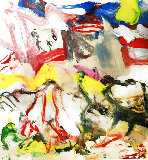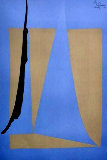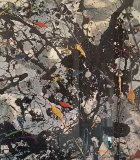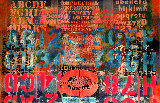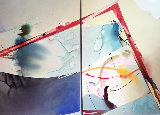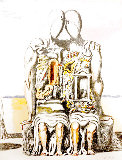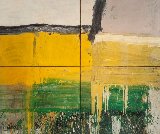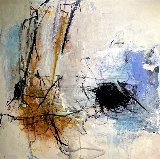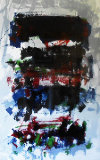-

-
Philip Guston
United StatesArt Brokerage: Philip Guston American Artist: June 27, 1913- June 7, 1980. He was a notable painter and printmaker in the New York School, which included many of the Abstract expressionists, such as Jackson Pollock and Willem De Kooning. In the late 1960s Guston helped to lead a transition from Abstract expressionism to Neo-expressionism in painting, abandoning the so-called "pure abstraction" of abstract expressionism in favor of more cartoonish renderings of various personal symbols and objects. Phillip Guston was born in 1913 in Montreal, Canada, Guston moved with his family to Los Angeles as a child. When Guston was 10 or 11, his father hanged himself in the shed, and the young Guston found the body. Guston began painting at the age of 14, and in 1927 he enrolled in the Los Angeles Manual Arts High School, where both he and Jackson Pollock studied under Frederick John de St. Vrain Schwankovsky and were introduced to Modern European art, oriental philosophy, theosophy and mystic literature. This early work was figurative and representational, and though his parents did support his artistic inclinations, he often made drawings in his closet, lit by a hanging bulb. Apart from his high school education and a one-year scholarship at the Otis Art Institute in Los Angeles, Guston remained a largely self-taught artist. During high school, Guston and Jackson Pollock published a paper opposing the high school's emphasis on sports over art. Their criticism led to both being expelled, but Pollock returned and graduated. At Otis on scholarship, Guston felt unfulfilled by the academic approach which limited him to drawing from plaster casts instead of the live model. Before dropping out of Otis, Guston spent a night in the studio making drawings of these figurative plasters scattered all over the studio floor. As an 18 year old, politically-aware painter, Guston made an indoor mural in L.A. depicting the Scottsboro Boys. This mural was defaced by local police officers, which impacted Guston's political and social outlook. Guston, as Philip Goldstein, along with Reuben Kadish, completed a significant mural in 1935 at City of Hope, a tuberculosis hospital located in Duarte, California, that remains to this day. In 1936 Guston moved to New York where he worked as an artist in the WPA program. During this period his work included strong references to Renaissance painters such as Paolo Uccello, Masaccio, Piero della Francesca, and Giotto. He was also influenced by American Regionalists and Mexican mural painters. A powerful and enduring influence, whom Guston was to acknowledge throughout his career, was Italian painter Giorgio de Chirico. Musa Mayer, Guston's daughter, recalled in her book Night Studio: A memoir of Philip Guston how the artist kept a De Chirico monograph in his studio, to which he would often refer. Guston's first foray into teaching was as an artist-in-residence at the State University of Iowa (today the University of Iowa) from 1941 to 1945. There he completed a mural for the Social Security Building in Washington, D.C., turned to easel painting, and had his first solo exhibition in 1944. After this he was artist-in-residence at Washington University in St. Louis, Missouri until 1947. In the 1950s, Guston achieved success and renown as a first-generation Abstract Expressionist. Listings wanted by Art Brokerage.
Read More + - Create Listing 1 Artworks for sale 10 Followers
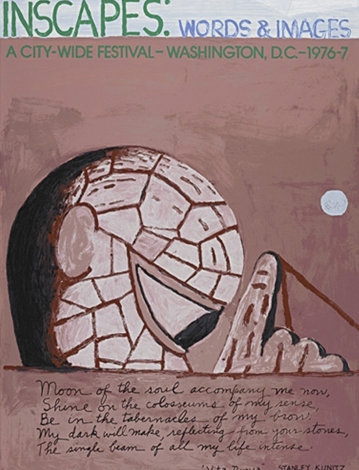
|
Philip GustonInscapes: Words and Images 1977 HSLimited Edition Print: Screeprint, Hand Signed, Proof, From The Edition of 10029x22 in | 74x56 cm |
🔥Framed Hand Signed Screenprint- 6 Watchers - Blue Chip Motivated
|
-
Art Wanted
We have interested buyers looking for these artworks by Philip Guston:
- CREATE AD
- Art Brokerage Requests (1)
- Collector Requests (1)





